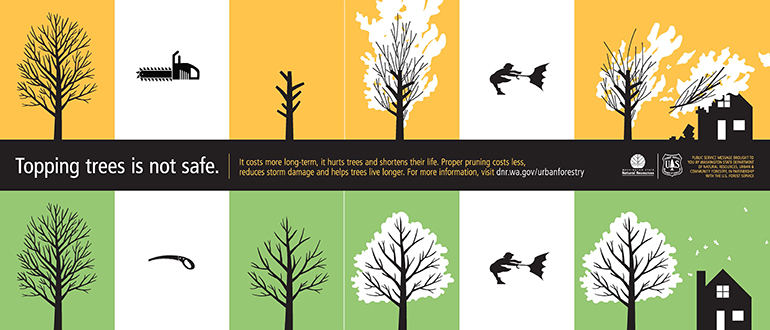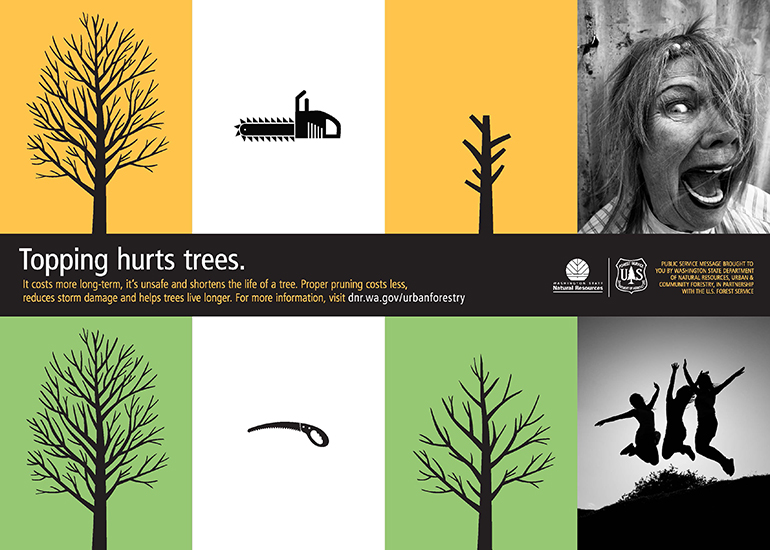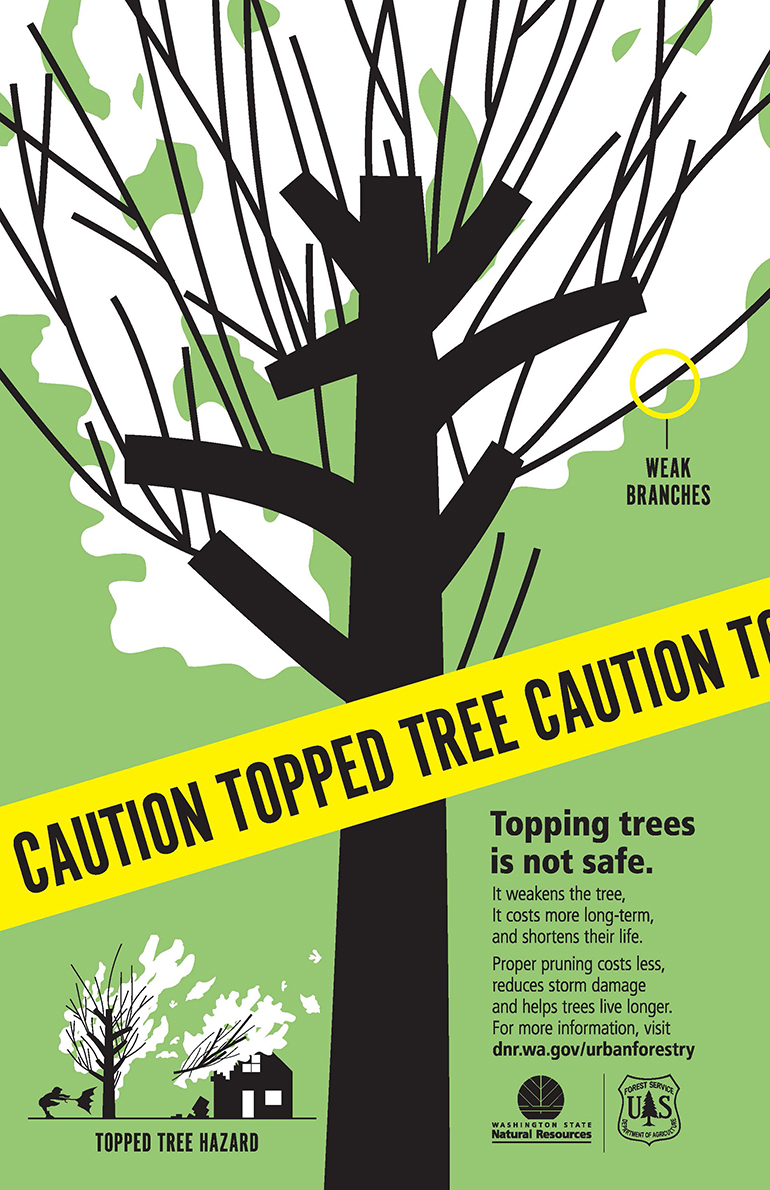Anti-Tree Topping
DON'T TOP TREES
The Washington State Department of Natural Resources (DNR) is happy to provide you with information and resources to help promote public understanding of proper tree care in your communities.
After topping, many suckers (epicormic shoots) sprout from dormant buds along the older trunk or branches of a tree, growing in response to the massive stress topping puts on a tree. These shoots develop quickly as weakly attached branches. Large branch stubs and big wounds left after topping seldom close or heal completely. Nutrients are no longer transported to the large stubs, and the large, open cuts are vulnerable to insect invasion and fungal decay. Once decay has begun in a branch stub, it may spread into the main trunk. Also, the exposed wood often rots, causing weak, hollow limbs. Consequently, previously topped trees often have dead or dying limbs that need to be removed.
DNR's goal is to educate the community about the negative effects of tree topping and encourage proper tree care. Healthy trees are an asset to our society, and the practice of tree topping often leads directly to a tree becoming unhealthy and unsafe. Because of this, we want to encourage people to contact a certified arborist when they are considering tree care.
Promotional Materials
The following materials were created to help organizations promote anti-tree topping:
Funding for the Urban and Community Forestry program is from the USDA Forest Service.
Federal Civil Rights
In accordance with Federal law and U.S. Department of Agriculture policy, DNR does not discriminate ing on the basis of race, color, national origin, sex, age or disability. However, should a person wish to file a discrimination complaint, please write to:
In accordance with Federal law and U.S. Department of Agriculture policy, DNR does not discriminate ing on the basis of race, color, national origin, sex, age or disability. However, should a person wish to file a discrimination complaint, please write to:
USDA, Director
Office of Civil Rights
Room 326-W, Whitten Building
1400 Independence Avenue SW
Washington D.C. 20250-9410
or call 202.720.5964 (voice and TDD).
Office of Civil Rights
Room 326-W, Whitten Building
1400 Independence Avenue SW
Washington D.C. 20250-9410
or call 202.720.5964 (voice and TDD).
USDA is an equal opportunity provider and employer.




